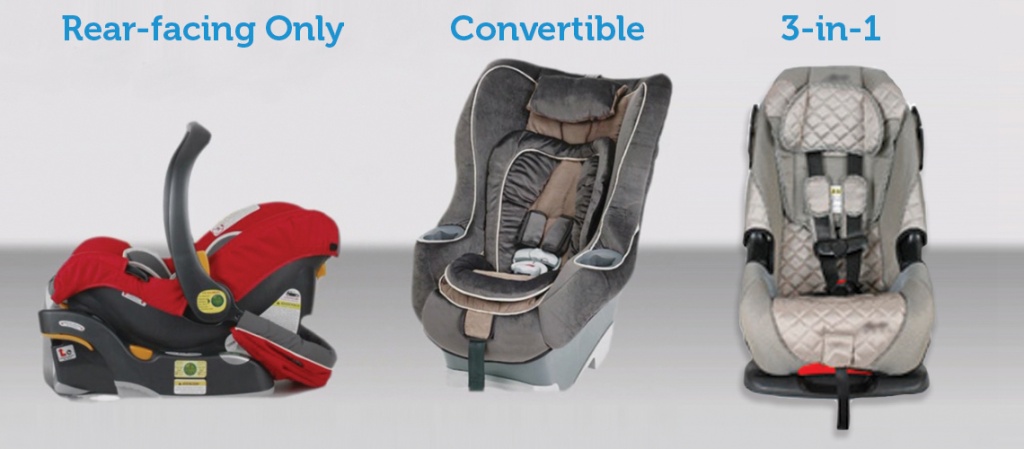
When buying a new child safety seat, it can be overwhelming. There are many choices depending on your lifestyle and your needs. Consider these questions when picking out a seat for your family:
What features are most important to consider when selecting a seat?
When buying a seat, it is important to get one that fits your child, one that fits in your vehicle, and one you can install correctly every time. It is always important to check the height and weight limit of the seat to ensure you get one that is appropriate for your child. Learn and research more about the different types of seats before you buy one. Check there is a label that says it meets Federal Motor Vehicle Safety Standards (FMVSS). Your child safety seat should also come with an owner’s manual and instructions on how to install the seat.
Does every seat have to pass a safety check?
Each seat that you buy new has to pass several tests to meet Federal Motor Vehicle Safety Standards (FMVSS). Be sure to read Tips for Buying a Car Seat Online to ensure you are getting a seat that meets federal guidelines.
If a child can fit in an infant seat and a convertible seat, is one safer than the other?
Again, it is always important to look at the height and weight restrictions of the seat to make sure you get one that fits your child. There are several different seats you can use rear-facing, so it is important you get one that is best for your family and vehicle. It is important remember that Tennessee State Law (T.C.A. 55-9-602) requires children under one year old and weighing less than twenty pounds must be in a rear-facing seat. The child must meet both of these requirements before moving to a forward-facing seat. Best practice recommends leaving a child rear facing for as long as possible until they exceed the height OR weight requirements of the seat. A rear-facing seat refers to a seat that is in the opposite direction of the driver, where the child’s head is towards the front of the vehicle and the child’s feet are towards the back of the vehicle. Also, make sure to read both your vehicle manual and your child safety seat manual before installing the seat. There may also be labels on the car seat that will help guide you through the installation process.
Types of Rear-Facing Seats:
- Infant Only Seat-Typically has a base and infant child safety seat that you can take in and out of the car. You will only be able to use this seat rear facing and once the child out grows the weight OR height restrictions you need to buy a new seat.
- Convertible Car Seat-Can be used rear facing or forward facing. Once the child out grows the rear facing weight OR height requirements, you can move the seat to forward facing and continue to use the seat. These seats typically do not come with a base. When looking into a seat that you can use for a longer, a convertible seat may be a good option because of being able to use it rear facing or forward facing depending on the height and weight of the child.
- All in One Child Safet Seat-This child safety seat can typically be used from birth to booster seat. It is a larger seat so if you have a small vehicle this is something to consider. You can use this type of seat rear-facing, forward-facing, and as a booster seat. Always check the height and weight restrictions when using the seat in different ways.
Do Car Seats Expire? Can the base expire? How bad of a car wreck does it need to be before replacing a car seat and/or base?
Most child safety seats only last six years and expire six years from the date of manufacture. This is because the plastics from which the seats are made break down due to hot, cold and sun exposure. Typically, the manufacturer will print the seat's expiration date on the restraint. If you cannot identify the expiration date on the product, call the manufacturer and provide the model number and date of manufacture to learn the expiration date.
We do not recommend donating your used child safety seat. Used seats may be expired – every seat comes with an expiration date. A buyer would have no way of knowing if the seat had been in a wreck. Some safety features or parts may be missing, and the owner’s manual would likely not be included. For these reasons, many thrift stores will not accept donations of car seats.
Child safety seats are designed to perform properly in only one crash. That's it, one. We thus discourage the use of child safety seats that have already been involved in a motor vehicle crash, even if there is no visible damage to the seat. If you do not know the history of the seat, refrain from using it rather than assuming it is safe. No matter how small the car wreck is the car seat needs to be replaced. Always mention to your insurance company that there was a child safety seat involved in the wreck as sometimes they help cover the cost of a new seat.
Sources: